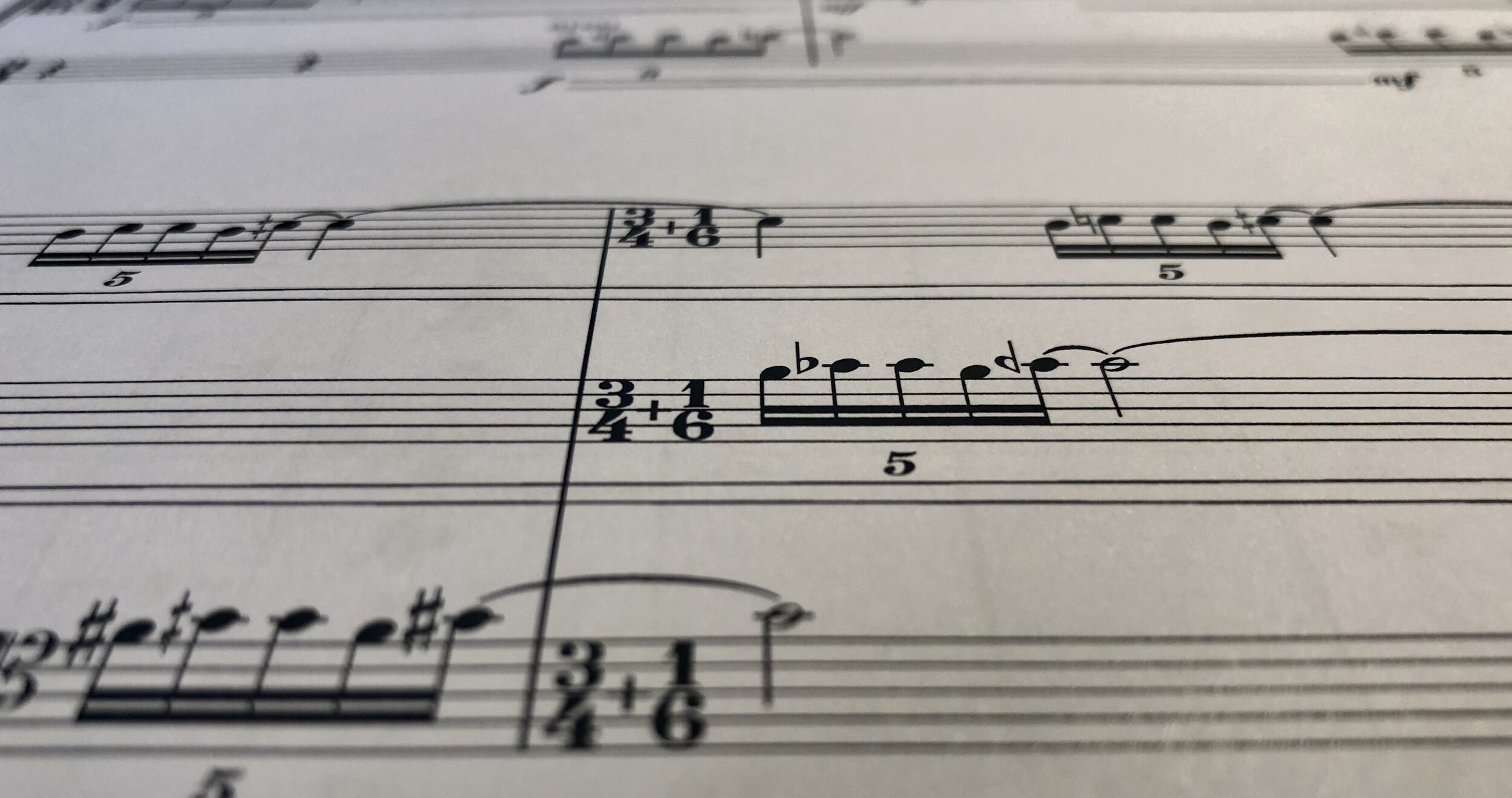
Music Engraving
I love music notation. As composer and conductor I experience sheet music at both ends of the process, so I am always seeking to produce notation that satisfies both the author's intent and the performer's requirements. Additionally, I strongly believe notation can be beautiful. My engraving aims not just to fulfil a utilitarian role but to look elegant and inspiring to the musicians who read it. In my experience putting in this extra effort always pays off; when sheet music is flawless it not only saves rehearsal time but instills confidence and enthusiasm in performers.
I have been using Sibelius for years and have come to learn a great deal about the software. I can produce beautiful scores incredibly quickly and with a uniquely personal style. I am also able to push Sibelius to produce unorthodox, unconventional and experimental notation far beyond what it was originally designed to handle.
My dual roles as experimental composer and engraver enjoy a symbiotic relationship: I frequently seek to write music that I don't know how to notate, which forces me to learn, which pushes me to seek even more experimental notation. I am of the opinion that notation software must work for the engraver so I approach each project with a clear understanding of how the finished score will look before I even turn my computer on, and I always find a way to achieve beautiful results.







You can check out some specific examples of my work here. My set of piano etudes (2020) showcases many aspects of contemporary notation including extended techniques, non-dyadic and simultaneous time signatures, asynchronous tempi, bespoke layouts and graphic notation. Kemal at Gallipoli is a piece for large orchestra that demonstrates how I prepare a score for a conductor; you can also check out the viola part. For theatre music, check out the flute book from my opera The Fulfilment of Ill-Conceived Designs. Requiescat is a short song that demonstrates working with music for voice, ensuring clarity of both the music and the text. Lastly, Alaskan Landscapes is a percussion ensemble piece with an interesting notational premise: all six players have the same part.
Of course if you want more examples head over to my portfolio page, where most of the pieces listed have links to view the scores. If you want to learn more about my approach to music notation, check out my blog: I occasionally post tips and guides on using Sibelius effectively.
Want me to engrave your music? Get in touch for a quote! Want to discuss some obscure notation? Get in touch for a chat! Have a question about either Sibelius or notation in general? Get in touch and I'll try to help (and maybe turn it into a blog post)!